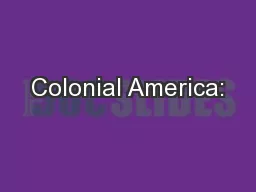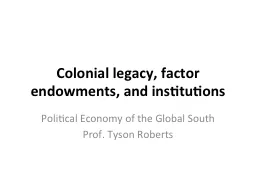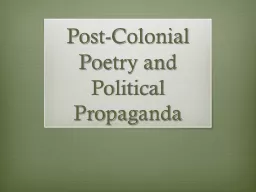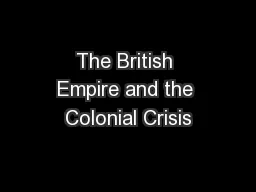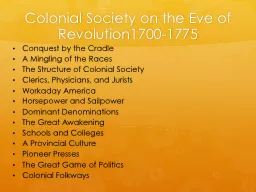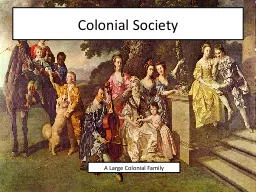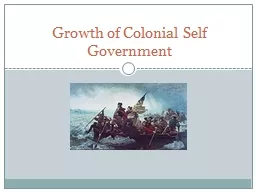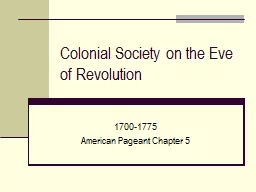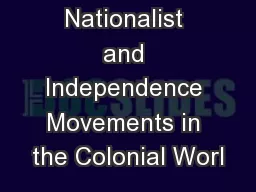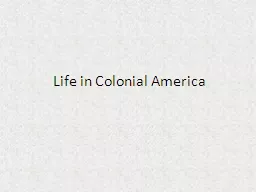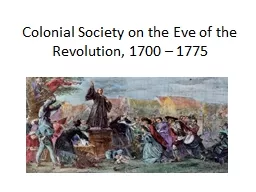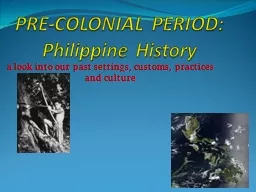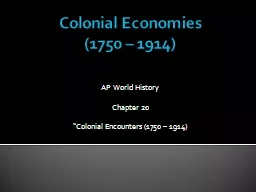PPT-Colonial Society
Author : natalia-silvester | Published Date : 2016-08-10
American Life in the 17 th Century New England Society Education amp Literacy Towns with more than 50 households were required to appoint teachers Harvard College
Presentation Embed Code
Download Presentation
Download Presentation The PPT/PDF document "Colonial Society" is the property of its rightful owner. Permission is granted to download and print the materials on this website for personal, non-commercial use only, and to display it on your personal computer provided you do not modify the materials and that you retain all copyright notices contained in the materials. By downloading content from our website, you accept the terms of this agreement.
Colonial Society: Transcript
Download Rules Of Document
"Colonial Society"The content belongs to its owner. You may download and print it for personal use, without modification, and keep all copyright notices. By downloading, you agree to these terms.
Related Documents


